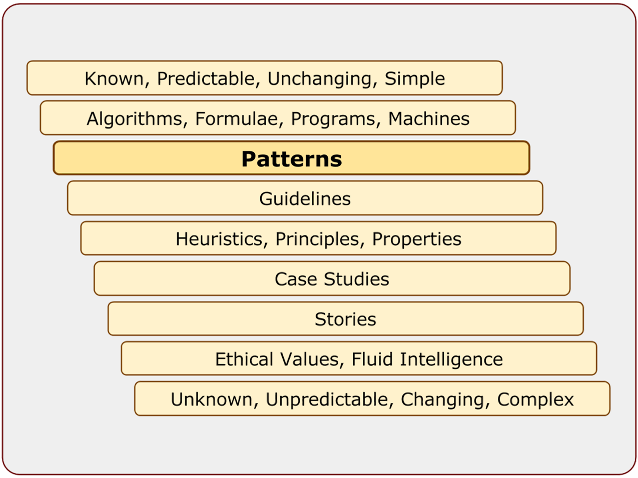Patterns are prescientific. They are not derived from first principles as scientific theory, but from empirical observations. They can provide a phenomenological foundation on top of which scientific theories can be formulated [SALINGAROS-2000]. Patterns are an actionable representation of knowledge, yet they are not deterministic. Patterns are cognitive and capture deep understanding of recurring problems [MURRAY-2000].
In a spectrum of potential forms of knowledge, patterns fall between guidelines and deterministic forms [MURRAY-2000], as illustrated in the figure.

Patterns are a form of knowledge, represented here in a spectrum of forms of knowledge. (Source: Tomas, J. (2005), “Patterns to Promote Individual and Collective Creativity” IBM Research)
Patterns always carry, directly or indirectly, a valuable human component (comfort, convenience, utility, aesthetic, etc.). Patterns are good at representing knowledge in socio-technical domains, where social and human factors are important [THOMAS-2005]. Patterns are a form of structured literature that go beyond documentation [COPLIEN-1997]. Patterns help to enrich knowledge in unfamiliar areas, stir emotions, and motivate people to find better solutions. Patterns contribute to reasoning and communicating about any domain wherein designing and giving form and shape are prominent activities. This is why patterns are applicable to organizational design.